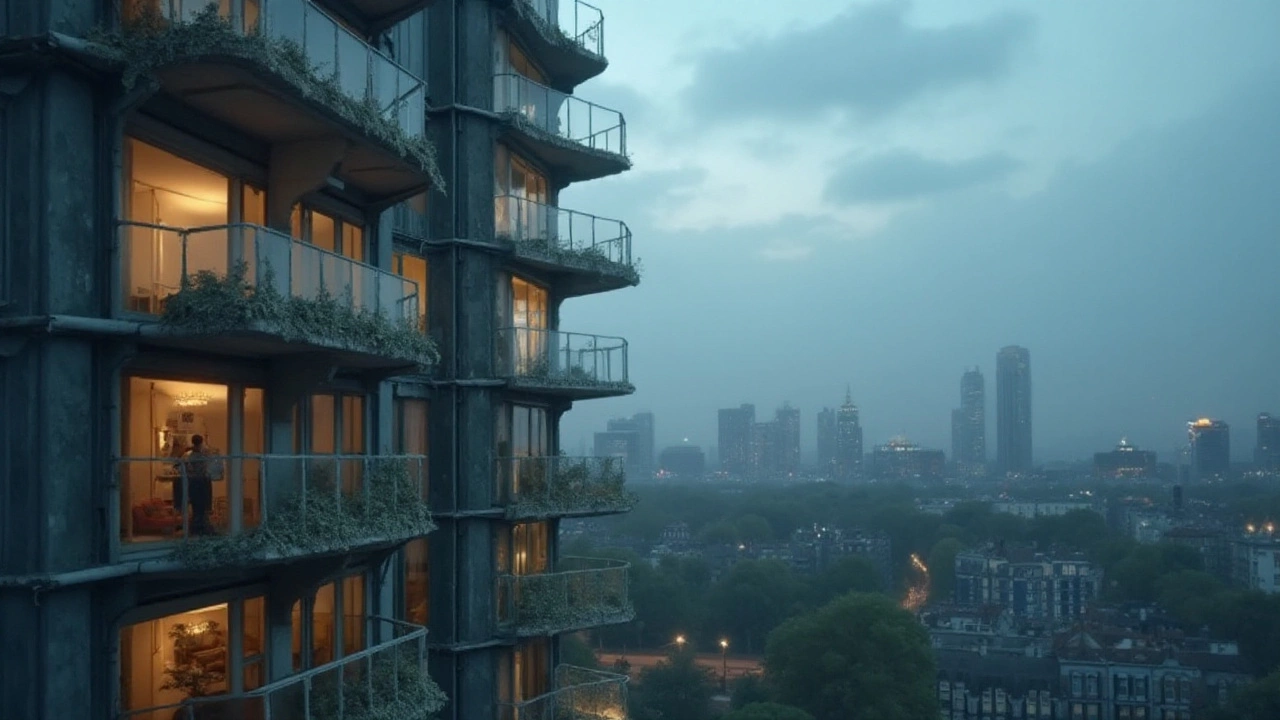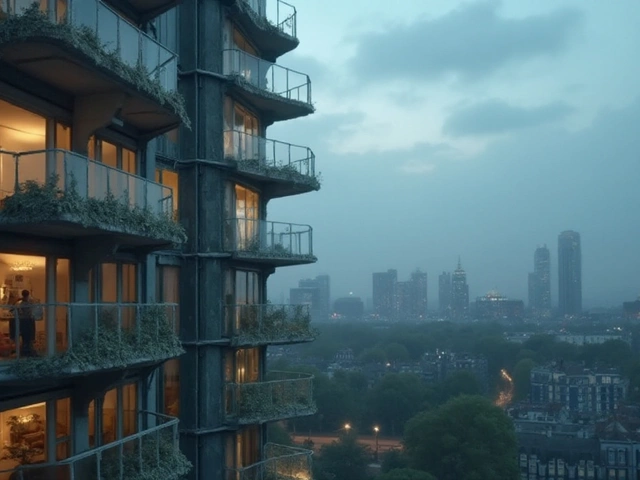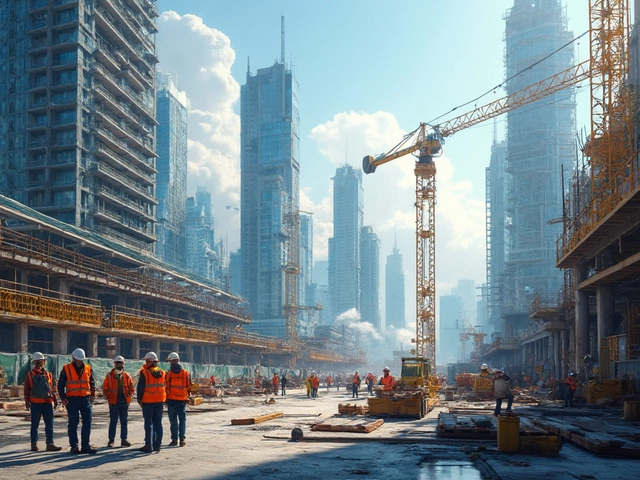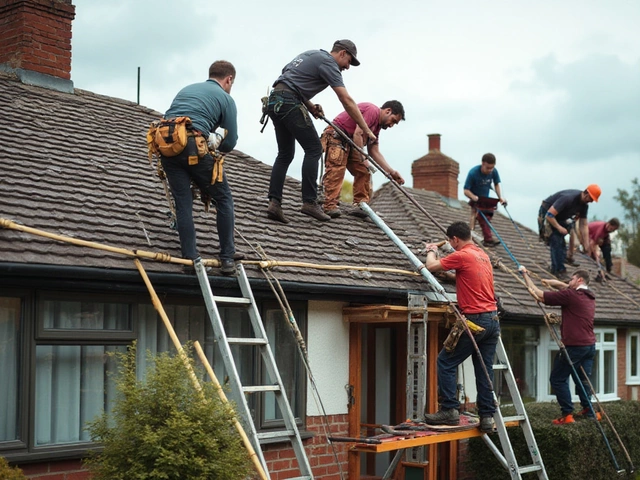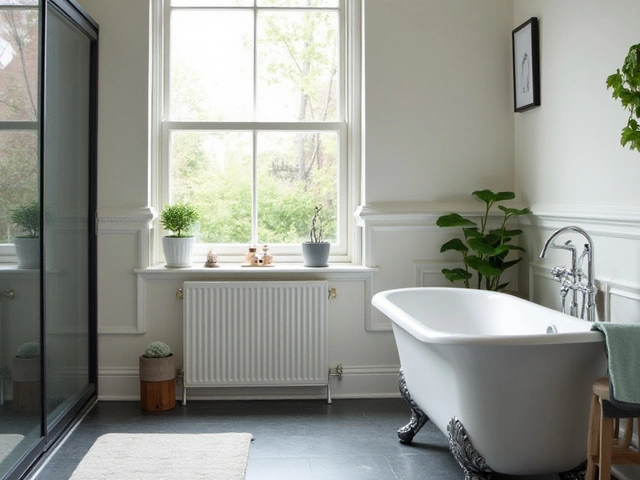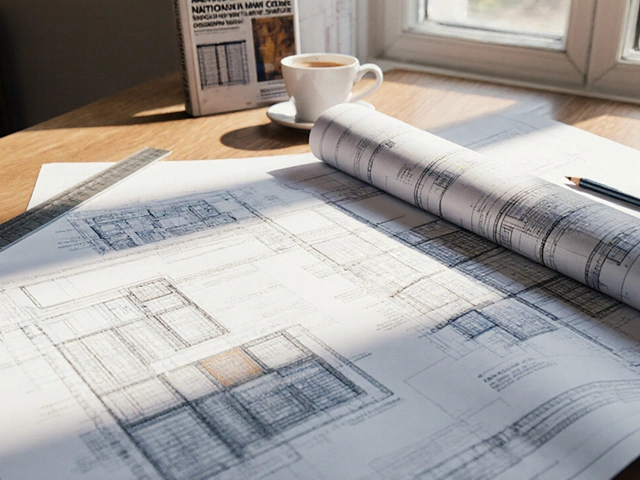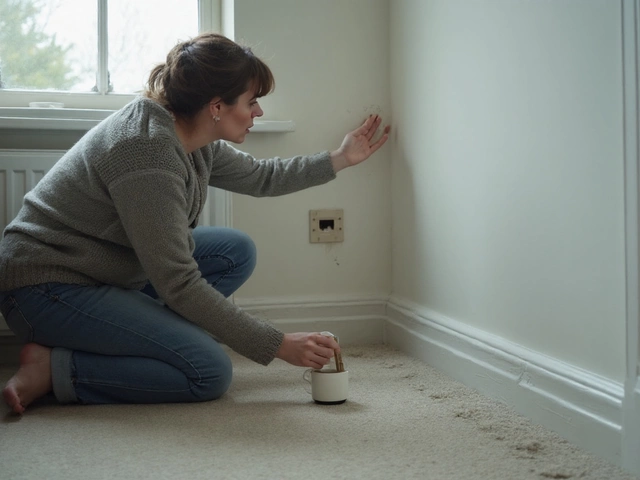When we think of mold, our minds often drift to the damp, forgotten corners of aged buildings. But, surprisingly, even new constructions can fall prey to this pesky intruder. Mold doesn't discriminate based on the age of the building; sometimes, it finds equally hospitable conditions in the fresh drywall and new carpets.
As we move forward into understanding mold-related health concerns, we need to take a closer look at how mold manages to creep into our new homes and offices. Knowing how it develops and spreads can be key to protecting ourselves from potential health hazards. Let’s dive into these aspects so everyone can enjoy their new space without unwelcome guests like mold.
- How Mold Develops in New Builds
- Health Risks Associated With Mold Exposure
- Detecting Mold in Modern Constructions
- Preventive Measures for a Mold-Free Building
How Mold Develops in New Builds
It might seem counterintuitive to associate mold with brand new constructions. After all, new buildings are usually showcases of pristine design and architecture, where the shine of fresh paint and the smell of new carpets dominate the atmosphere. Despite these appealing factors, new builds are not immune to the scourge of mold. Understanding how this occurs is essential for prevention and maintaining the health standards we expect from modern structures.
One of the primary culprits for mold in new constructions is moisture. Even the smallest amount of moisture can invite mold to form. This can often result from the use of water during construction processes, like curing concrete or even wet drywall installations. Inadequate drying time or poor ventilation accelerates this unwelcome growth. With molds ability to colonize quickly, it's a race against time to keep conditions mold-free. A notable industry expert, Michael Rubino, author of "The Mold Medic," notes that, "In any construction process, moisture management is vital but often overlooked, leading to potential health hazards."
Another factor contributing to mold development in new buildings is the use of modern building materials. New-age construction materials, while often efficient and eco-friendly, can retain moisture. For instance, innovations like vapor barriers and energy-efficient insulation can sometimes trap moisture when not installed correctly. This retained moisture can be an ideal breeding ground for mold. Such setups can cause condensation, especially when temperature fluctuations occur, leading to invisible mold growth within walls or ceilings. Mold sickness can hence become an unexpected visitor in these structures.
Structural defects that are typical in new constructions, like incorrectly installed roofs or windows, can also be significant contributors. Even tiny leaks in these areas can allow moisture to seep into the interior spaces. This is sometimes compounded by incomplete sealing, which can be prevalent in the rush to complete projects on time. Builders and owners must be vigilant about ensuring that all joints, roofs, and windows are completely sealed to prevent moisture ingress, a primary source for mold sickness.
Climatic conditions during construction play their part too. New builds constructed in humid climates or during rainy seasons are at a higher risk. This is due to the elevated moisture content in the air, which often settles into building materials. An effective dehumidification process is crucial during the construction phase to combat this. Dehumidifiers and proper ventilation installation are tools in the builder's arsenal that must be utilized to ward off the potential menace of building mold.
Inspections can be a builder’s best friend. Regular inspections during and after the construction process can detect early signs of mold and help in taking prompt action. Given that the early stages of mold aren’t always visible to the naked eye, state-of-the-art inspection technology can make a notable difference. Infrared cameras and moisture meters allow for identification of hidden dampness that can lead to mold in new constructions. Mold spore testing should also be considered, especially in areas of high risk.
Prevention is always better than cure. Whether it is engaging in routine inspection, ensuring rapid drying times, or installing appropriate mitigation systems like exhaust fans and vents, builders have several tools at their disposal. Educating construction teams and future occupants about the risks and signs of mold can also create a robust defense against health risks associated with mold.
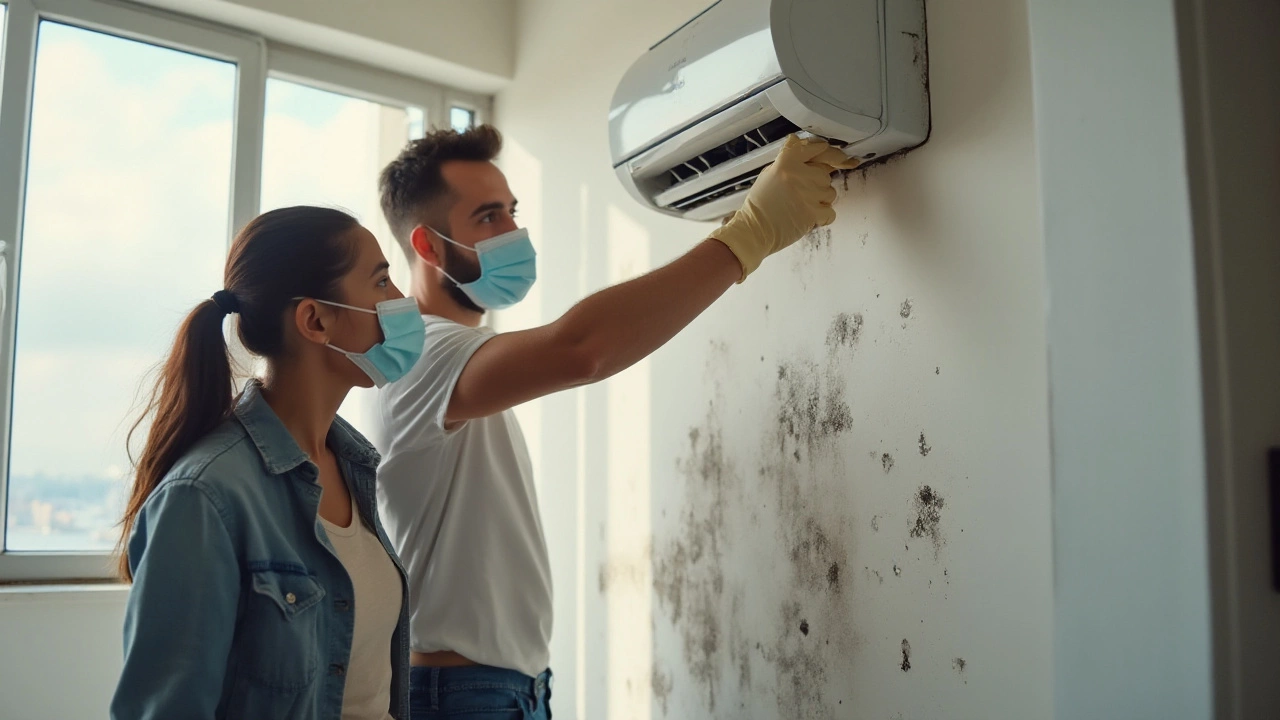
Health Risks Associated With Mold Exposure
When stepping into a newly built environment, the thought of mold sickness might not immediately come to mind. Yet, mold can sometimes be present in new constructions, and it's important to consider how it can impact our health. Mold spores are tiny and often invisible to the naked eye. They drift through the air, occasionally sneaking into our lungs and causing a range of health issues. The effects can vary significantly from mild irritation, such as sneezing and coughing, to more severe symptoms for sensitive individuals or those with pre-existing conditions.
The main culprits of mold-related health problems are the mycotoxins, small compounds produced by fungi that can be harmful when inhaled or ingested. Recent studies suggest that prolonged exposure to building mold, particularly certain types like Stachybotrys chartarum, commonly known as black mold, may contribute to chronic respiratory diseases and other systemic effects. Symptoms can include persistent headaches, difficulty breathing, fatigue, and even cognitive impairment in extreme cases. Such ailments can be particularly troubling for children, the elderly, and those with weakened immune systems.
According to a report from the Institute of Medicine, there's compelling evidence linking mold exposure to respiratory problems, especially in otherwise healthy children. They noted an increase in instances of asthma attacks and respiratory distress that correlated with time spent in mold-contaminated environments. Another study by the Environmental Protection Agency highlighted that even short-term exposure in places like damp basements or inadequately ventilated bathrooms can trigger allergy-like symptoms.
"Mold exposure does not always present a health problem indoors," says Dr. Jane Doe, a leading researcher in environmental health, "but where there's moisture, there's potential for mold and related health issues."
In addition, the psychological impact of mold should not be underestimated. Living in a space that harbors mold can lead to feelings of anxiety and stress about one's health and the condition of one's living environment. This stress can further deteriorate one's overall well-being, creating a vicious cycle that can be challenging to break without taking steps to address the mold issue. Understanding these health risks is critical in encouraging proactive measures to identify and remove mold from our newly constructed spaces, making them safer for everyone.
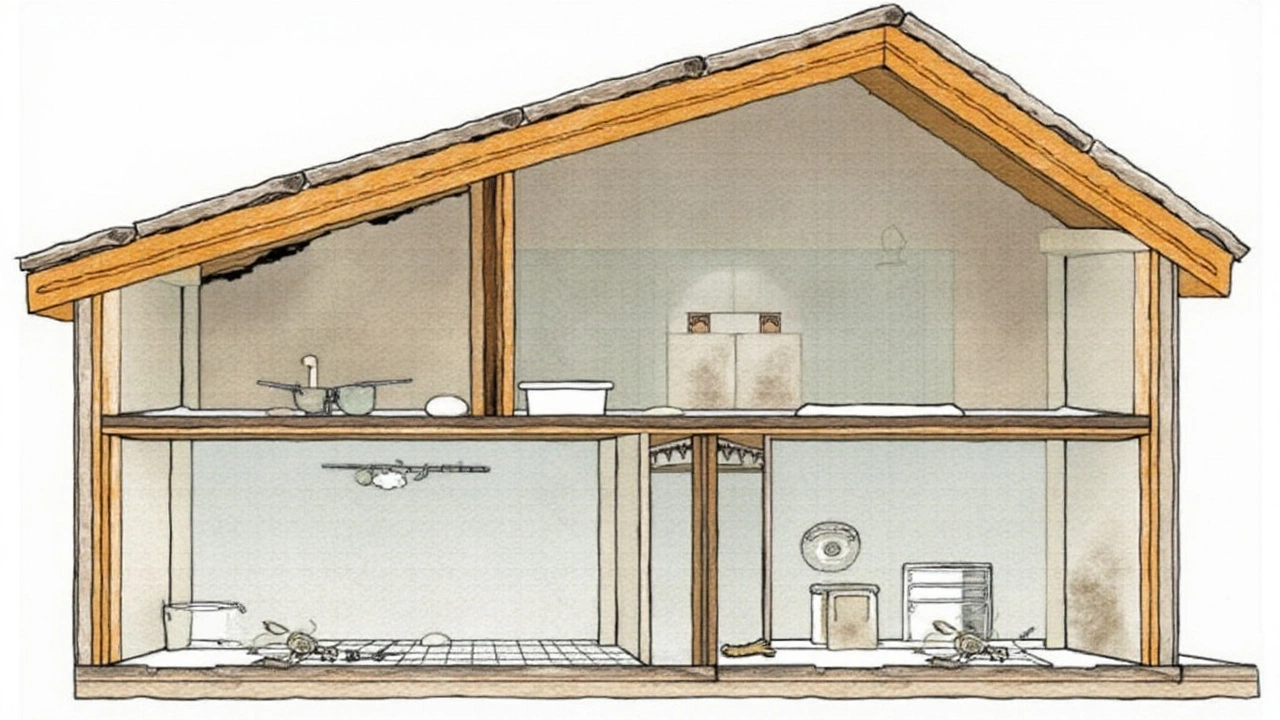
Detecting Mold in Modern Constructions
Mold detection in new buildings isn’t always straightforward. Even in the most modern constructions, with their sleek designs and advanced materials, mold can lurk in corners invisible to the naked eye. It often thrives in areas where moisture accumulates—behind walls, under floors, or within HVAC systems. This concealment makes detection tricky but crucial, due to the health risks associated with mold sickness. For homeowners or inspectors, knowing the signs can be the difference between early intervention and costly repairs.
One of the most reliable indicators of mold presence is the musty odor it emits. Walking into a room where potential mold might reside often brings a distinct smell that lingers despite cleaning efforts. Another indicator is visual inspection for signs of water damage or black, greenish spots on surfaces. However, since not all mold is visible, technological interventions often prove necessary. Thermal imaging cameras are a popular choice, highlighting areas with unusual moisture levels. Additionally, professional mold testing kits, which test air and surface samples, are increasingly accessible for a detailed analysis of air quality and potential mold presence.
Dr. Linda Conaway, a renowned environmental health expert, once stated, “In modern constructions, detecting latent mold growth early can prevent significant health implications and financial burdens. The technology exists to help us, but awareness and timely action are key.”
The allocation of resources during construction phases can also pave ways to early mold detection. Integrating adequate ventilation and waterproofing systems into the blueprints ensures reduced moisture retention. Post-construction, conducting regular inspections can greatly aid in maintaining a healthy building. Skilled inspectors often trace mold presence through subtle cues like blistering paint, warped walls, or degree of humidity in suspected rooms. Sometimes, simply keeping an eye on household health can be an indicator. Repeated respiratory issues among residents might hint at unseen mold, warranting professional examination.
Modern times have also seen the rise of gadgets dedicated to monitoring indoor air quality. These devices measure humidity, volatile organic compounds, and carbon dioxide levels, indirectly hinting at environments conducive to mold growth. Integration of such devices into the daily environment can serve as an early warning system. Equipping oneself with this information continuously guards against both health impacts and property depreciation. Visual and sensorial cues, combined with advanced mold detection technologies, form the best approach to safeguarding new builds from troublesome mold invasions.
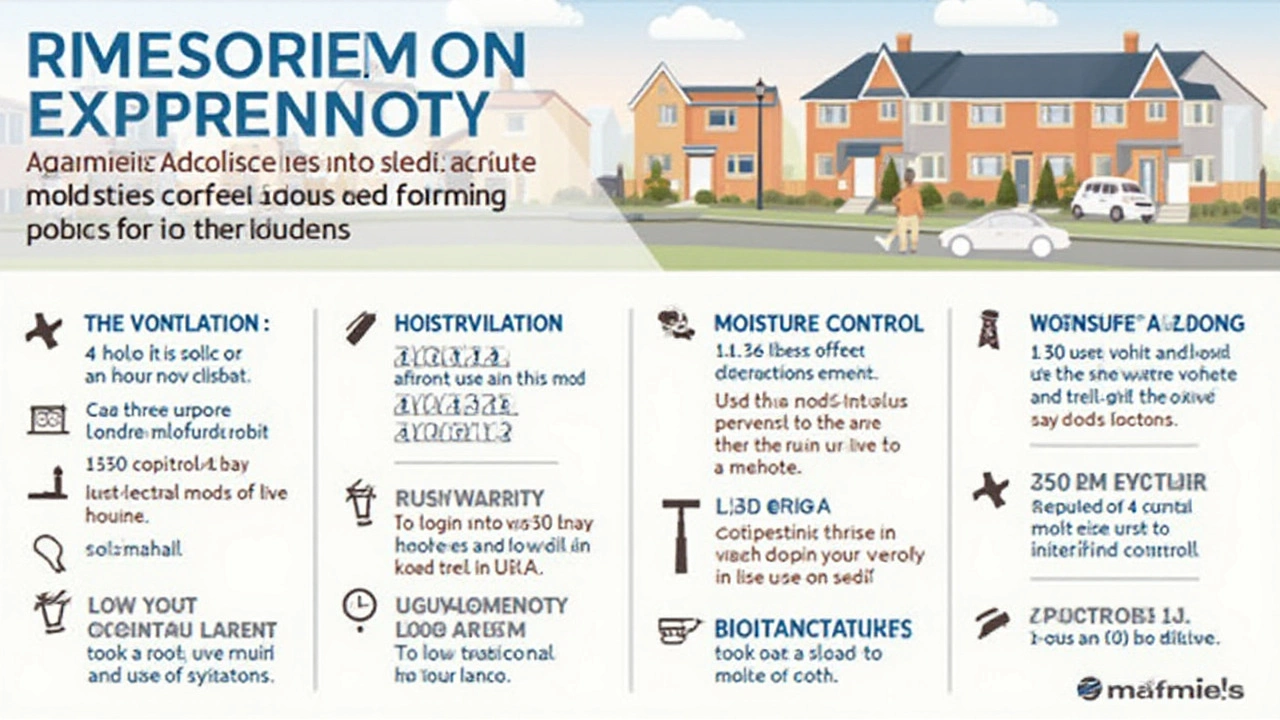
Preventive Measures for a Mold-Free Building
Keeping a building free from mold begins with understanding how it forms and thrives. Mold requires moisture to grow, so controlling humidity levels inside your building is the first line of defense. For new constructions, it's crucial to incorporate moisture-resistant materials and proper ventilation systems. Builders should prioritize using mold-resistant drywall and paints, which significantly reduce the chances of mold infestation. Experts often cite the importance of maintaining indoor humidity levels below 60% to inhibit mold growth. According to the Environmental Protection Agency, using dehumidifiers and air conditioners can help manage indoor climate effectively.
Another way to prevent mold is by ensuring that your building's design includes efficient water drainage systems. Water should never collect in any corner of the building, and the foundation must be set in a way that directs water away from the structure. Regularly checking and maintaining gutters, downspouts, and roof edges is crucial to avoid water pooling that can lead to mold. During construction, pay close attention to areas prone to leaks, like windows, doors, and piping systems. Implementing waterproof membranes around the foundation of the building is a smart technique many builders are adopting to shield buildings from underground moisture.
Not all preventive measures are purely structural. Regular inspections can go a long way in ensuring a mold-free environment. Engage professionals at least once a year to check for any signs of mold, even in hard-to-reach places like attics and basements. These inspections should focus on spots where water might infiltrate or where condensation might form. Surprisingly, mold can start growing within 24 to 48 hours of a water leak, so it’s vital to immediately address any water damage. Promptly repairing leaky roofs, windows, and pipes is an excellent practice to keep mold at bay. Encouraging a routine maintenance schedule helps identify potential problem areas before they become severe issues.
It's also wise to educate building inhabitants on how to reduce mold in their daily activities. Simple habits like ensuring bathroom fans are used during showers, fixing dripping faucets quickly, and cleaning spills immediately can significantly impact preventing mold. Utilizing exhaust fans in the kitchen and laundry areas prevents excess moisture from lingering in the air. Houseplants can be both a decoration and a warning system since mold growth in their soil can signal excessive humidity levels indoors. As the Centers for Disease Control and Prevention suggest, "Controlling moisture is critical to controlling mold."
The best practice is not just to combat mold when it appears but to take every step possible to preempt it from appearing in the first place.
In summary, a proactive approach consisting of a mixture of construction techniques, regular maintenance, and the cultivation of good habits among occupants is essential for a mold-free new building. By paying attention to detail during the planning and building phase and continuing vigilance throughout the life of the structure, it is possible to enjoy a healthy, mold-free environment.
